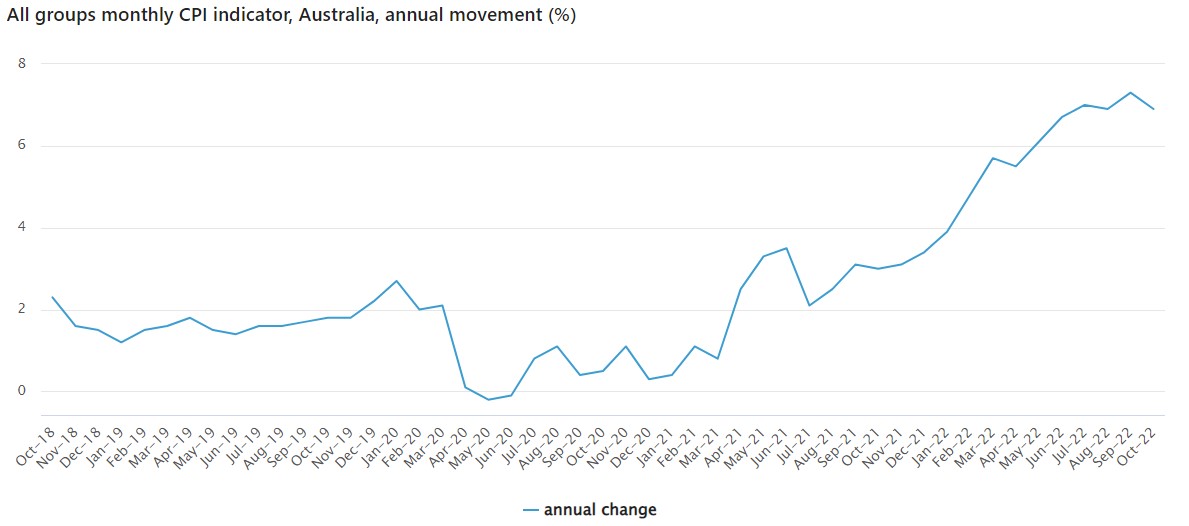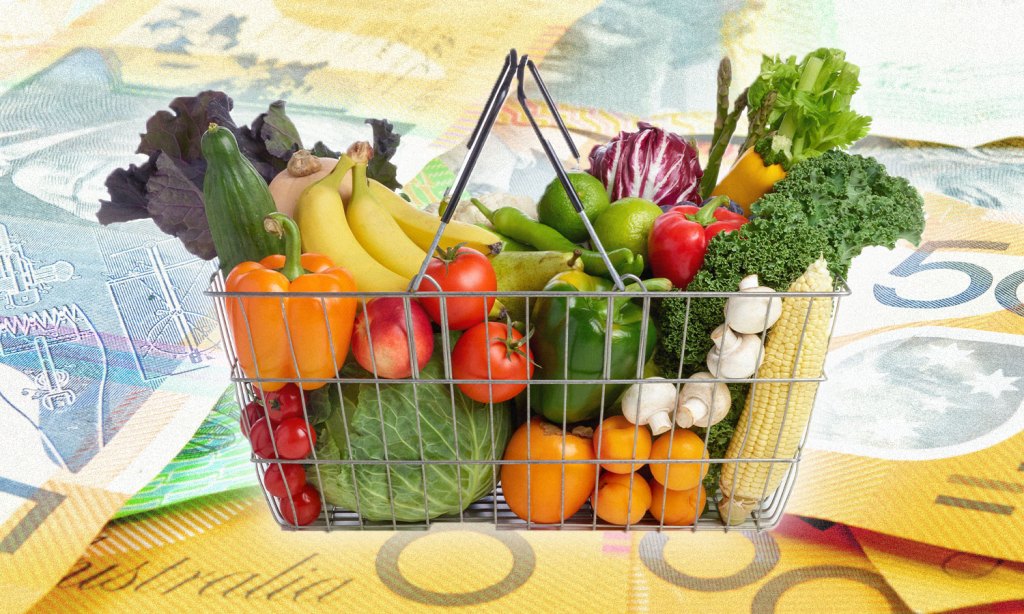Inflation is now currently sitting at 6.9%, a drop of 0.4% on last month’s figures, according to the latest data released by the Australian Bureau of Statistics.
However, inflation is still at near-30 year highs and Michelle Marquardt, ABS Head of Prices Statistics has urged caution in response to the numbers.
Marquardt said in a statement that “This month’s annual movement of 6.9% is lower than the 7.3% movement in September, however CPI inflation remains high.”
The ABS tracks inflation based on household spending and, as with last month, the biggest driver of price increases was the cost of new homes, petrol, and fruit and veg.
Those three have gone up by 20.4%, 11.8%, and 9.4% compared to this time last year.
“High levels of building construction activity and ongoing shortages of labour and materials contributed to the rise in new dwellings,” Marquardt said.
The increased cost of fuel can be put down to the repeal of the temporary cut to fuel tax that came to an end in September.
There are some positives in these data though, with the price of food and non-alcoholic drinks dropping from a 9.6% year-on-year increase in September to 8.9% by the end of October.
Prices for international and domestic flights are also on a downward trend, dropping from 12.6% over last year’s cost to just a 3.7% increase. This can be explained by the ending of school holidays and Europe and America coming into their tourism off-season, lowering demand.
Fruit and veg, the big inflation ticket that has had so many of us worried at the supermarket checkout, also dropped in price due to better growing conditions creating an increased supply. Fruit and veg was up by 17.4% in September, which has now cooled off to a 9.4% increase on the previous year.

The ABS data stands in contrast to some of the predictions on inflation that we have seen recently. Yesterday, Reserve Bank of Australia (RBA) governor Phil Lowe said that rental prices will continue to soar into 2023 as migration picks up post-COVID, which in turn will cause inflation to spike.
“The other supply side issue we are focused on is the supply of housing, because the rental vacancy rate now is quite low and the population growth is picking up,” Lowe said.
“I’m imagining that we’ll see increased pressure on rents over the next year as population growth collides with fairly modest growth in the supply of housing”.
Rent makes up 6% of the ABS’ inflation metric, so an increase here could very well do that. However, with inflation dropping in other key areas, like food and fuel, we could see inflation continue to drop overall.
Financial experts appear to have been sidelined with the latest numbers, as, just this morning, CommSec economist Ryan Felsman predicted inflation would hit 7.4% this morning.
ANZ analysts believe that construction will start to fall by about 10% over the course of the next few years as the COVID backlog is worked through. This would also see inflation start to come down.
Although we’re certainly not out of the woods yet, these are decent indicators and better than what we might have expected to see.
Related: Inflation Is the Highest It’s Been in 32 Years — So What Does It Mean for Interest Rates?
Related: What the Rising Inflation Rate Means for You — and What’s Going to Be Done About It
Read more stories from The Latch and subscribe to our email newsletter.







